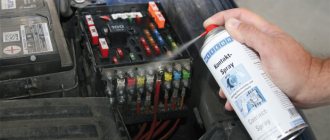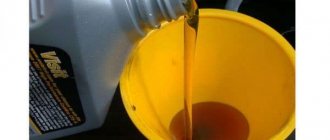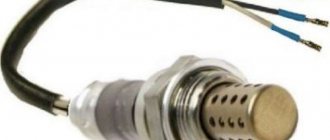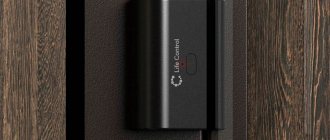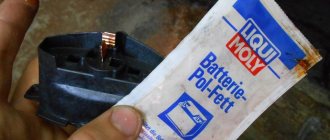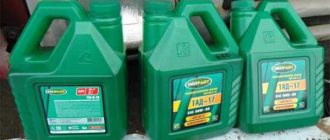What is graphite grease
Crushed graphite
Products such as lubricants do not have technical characteristics, they have physical and chemical characteristics. Such characteristics depend on what substances it consists of. Previously, graphite was called Graphite USsA. GOST (State Standard) 3333-80.
Graphite is crushed coal. Therefore, the lubricant turns out to be grainy. Crushed graphite fills microcracks, irregularities, and cavities, thereby reducing friction and protecting against corrosion.
It can be used with lithol or solid oil. Graphite with such a lubricant lasts longer.
Using graphite lubricant in a car
Let's look at the most common options for using graphite lubricant in a car.
- Lubrication of threaded connections. The most common use of graphite. Graphite lubricant does not dry out over time and does not allow moisture to enter the thread. This helps prevent corrosion of threaded connections, which makes it much easier to unscrew and tighten bolts and nuts.
- Pumping lubricant through grease fittings into the serviced joints (ball joints, steering ends) and placing it under the boots. Despite the fact that more effective lubricant compositions for these purposes have long been developed, graphite lubricant is still used by many motorists.
- Lubrication of spline joints. The splines of the propeller shaft, axle shafts, and gearbox input shaft are often treated with graphite lubricant.
- Application to contacts and terminals. Typically, the most heavily loaded electrical connections in a car are coated with graphite: battery terminals, body ground, and the positive wire running from the battery to the starter.
- Lubricating springs. Applying lubricant to the spring leaves increases their service life and reduces noise.
Before purchasing, check the application temperature of graphite lubricant. Various manufacturers produce compounds that are used over a wide temperature range: from -40 to +450 °C. But in general, the temperature regime of graphite lubricant is -20 to 60 °C. The best prices for graphite lubricant from various manufacturers are offered by the online store TopDetal.ru.
Advantages and disadvantages
If you use litol, for example, Litol-24, or solid oil together with graphite lubricant, then such a mixture will have the following properties:
- physical and chemical properties are preserved at temperatures from -40 to +400;
- effectively repels water;
- protects parts from corrosion.
The disadvantage is that it is abrasive and contains hard particles. In high-precision joints of parts, solid particles will create resistance and scratch the contacting pairs.
Graphite Grease Thickener
Basically, solid oil is used as a thickener.
Solid oil based
The use of solid oil as a thickener does not increase the cost greatly due to the inexpensive price of solid oil.
Color
Thick consistency of gray color.
Release form
Modern technologies allow it to be released in the form of aerosols. This allows you to apply the lubricant using a fine spray rather than using a spatula.
Kinds
It is also sold mixed with copper powder. It's called copper-graphite spray.
Types of thickeners:
- Organic.
- Inorganic.
- Hydrocarbon.
- Soapy.
It makes no sense to make graphite lubricant yourself, since the cost of the original one is not high, and it is impossible to achieve factory characteristics at home.
Copper-graphite grease
As mentioned above, an improved version of the classic graphite grease is copper-graphite grease. From the name it is clear that copper powder has been added to its composition, which significantly improves its performance properties. Features of the composition of copper-graphite lubricant include:
- ability to work at high temperatures (in this case it is impossible to indicate a clear range, since there are different compositions on the market with different properties, some of them are able to work at temperatures of about +1000°C and above, read the details in the description of the product);
- ability to withstand high mechanical loads (similar to the previous point);
- increased level of adhesion and stickiness;
- complete elimination of corrosion formations on protected surfaces;
- resistance to oil and moisture;
- The lubricant does not contain lead, nickel and sulfur.
Thus, copper-graphite lubricant perfectly protects working surfaces even under extreme operating conditions. Often, threaded connections are treated with this product before connecting them. This makes it possible to unscrew the connection in the future without any problems.
Popular manufacturers
Finally, let’s briefly look at some domestic manufacturers producing graphite lubricant. It’s worth saying right away that their products are largely similar to each other, so it doesn’t really matter what brand of lubricant you buy. Domestic graphite lubricant meets GOST 3333-80, so all products will be approximately the same.
So, in the post-Soviet space the production of graphite lubricant is carried out by:
- LLC "Colloidal-graphite preparations". This company produces graphite lubricants for production. Provides wholesale deliveries.
- Oil Right. As of autumn 2020, a tube weighing 100 grams costs 30 rubles. The product catalog number is 6047.
- TPK "RadioTechPayka". A 25 gram jar costs 26 rubles, a 100 gram tube costs 65 rubles, and an 800 gram jar costs 260 rubles.
As for foreign manufacturers, their products have a more advanced composition. As a rule, in addition to graphite, the products contain modern additives and elements that improve their performance. In this case, their description does not make sense, firstly, because the choice must be made based on the goal facing the consumer, and secondly, the number of lubricants and manufacturers is simply enormous!
Instead of a conclusion
Graphite lubricant is a cheap and effective means for protecting working surfaces from corrosion, increasing the performance characteristics of working pairs, as well as increasing their working life. However, when using it, remember that the lubricant cannot be used in high-speed mechanisms and where high precision is required from the working surfaces. So use it in the areas mentioned above and, given its low price, it will serve you well in protecting your vehicle's parts.
Application of graphite grease
Application to a threaded connection
In units of machines and mechanisms where there is no high precision, high quality, interaction of mating parts, this type is used.
Excellent for lubricating gear pair mechanisms. It absorbs shocks and vibrations resulting from end runout or axial play. Apply with a grease syringe, hydraulic or pneumatic gun.
Use in everyday life
Since graphite is not afraid of water, I use it to lubricate door and gate hinges and locks.
Application in machine components
Is used for:
- steering mechanisms, steering joints;
- ball joints;
- electrical connections, terminals (from corrosion);
- anti-squeak spring washers;
- caliper guides.
Copper-graphite aerosol is excellent for lubricating brake drums and discs to the hub flanges - this is protection against sticking.
After installing the threaded connections, they must be lubricated with either lithol, grease, or graphite lubricant. Then it will be much easier to unscrew the nuts.
People often ask whether it is possible to lubricate rolling and sliding bearings with graphite grease. Some bearings need to be lubricated with this type.
Also lubricate the end of the muffler. When the lubricant burns out due to temperature, a durable film is formed that protects against moisture and metal rotting.
Where is graphite lubricant used?
According to accepted rules, graphite lubricant is more often used in heavily loaded mechanisms. If we talk about a modern car, then most often it is used to lubricate elements of the steering and suspension systems.
Important: If a graphite lubricant contains mechanical components of graphite, it cannot be used to lubricate all kinds of bearings.
Using graphite lubricant in suspension
Graphite lubricant is most often used in suspension. Experts recommend its use to protect against wear of ball joints in which this composition is placed. Due to this, it is possible to reduce the load on the hinge during operation, which leads to a minimal risk of failure and a decrease in its production.
Please note: When restoration work related to the ball joint is performed, the graphite lubricant is preheated and then placed into the mechanism.
Also, graphite lubricant is often used to fill steering rod boots and tips to extend the service life of the mechanism. In many ways, the mileage before replacing these parts depends on how much lubricant was used during their installation, as well as on the quality of the lubricant itself. When the lubricant is depleted, knocking noises begin to appear caused by severe mechanical friction. If the part is used in this mode, it will quickly become unusable.
Please note: Due to the presence of lubricant in the boot, the oil film formed on the parts has the opportunity to be restored, as a result of which the service life directly depends on the lubricant reserves.
It is also recommended to use graphite lubricant during vehicle suspension assembly to lubricate various threaded connections. You can use regular lithium grease, but the graphite version will significantly reduce the chance of corrosion on fasteners. In addition, if you need to remove parts in the future during repairs, this will be much easier if you lubricate them during installation.
Please note: Another important feature of graphite lubricant is that it seriously improves the quality of the joints of mechanisms.
Another suspension element where it is recommended to use graphite lubricant is the support bearings in the struts, which are subject to serious mechanical stress during operation.
Using graphite lubricant in steering
In the steering system, graphite lubricant is most often applied to the steering knuckle bearings. When assembling the element, you need to fill it as tightly as possible with lubricant. In addition, it is also necessary to fill the protective cap with it in order to increase the total volume of the composition. Such actions will maximize the service life of the bearing. Another way to extend the life of parts is to regularly check that there is enough lubricant and add new lubricant if necessary.
Important: It is necessary to use simple graphite lubricant compositions in the bearing, which do not include mechanical elements of graphite.
The steering rack is also lubricated using graphite lubricants. Here the compound is driven into the housing to lubricate the gear itself. Some car manufacturers recommend that drivers monitor the amount of lubricant in the steering rack while operating the car, and add it if necessary.
Other ways to use graphite lubricant in a car
As noted above, to reduce the risk of corrosion, it is recommended to lubricate threaded elements with graphite lubricant. This can be done not only in the suspension, but also in other car systems.
You can also lubricate the battery terminals with graphite lubricant to eliminate the possibility of corrosive processes occurring on them.
( 158 votes, average: 4.45 out of 5)
Trilon B: battery restoration and cooling system flushing
Six ways to distinguish counterfeit motor oil from the original one
